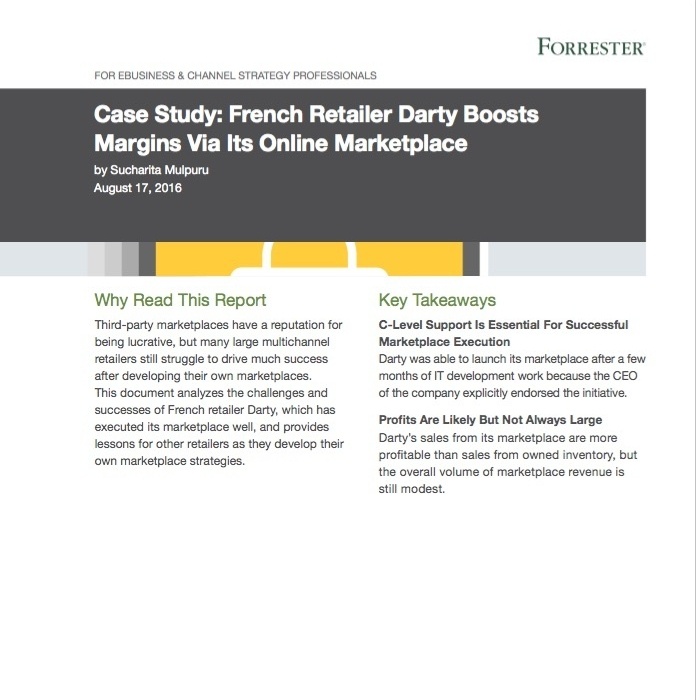As detailed in a recent MarketWatch article, retailers Macy’s and Kohls are struggle to catch up to what journalist Tonya Garcia calls “the Amazon effect,” as evidenced by their weak holiday sales at the end of 2016. What’s more, both Macy’s and Sears recently announced more store closings in 2017.
This is concurrent with existing trends. According to the American Customer Satisfaction Index Retail Report 2015 survey, Internet retail satisfaction is improving and physical retail foot traffic declined nearly 10%.
Experts and analysts agree these organizations must “further transform their businesses to operate across the bricks-and-mortar and e-commerce channels” to help address the threat from e-commerce giant Amazon.com.
Product assortment is a huge problem - and it underlies a bigger issue for omni-channel retailers
There is no doubt that product assortment is a major factor in Amazon’s success. It’s a key part of their winning Marketplace strategy, the virtuous cycle, which allows them to generate such traffic and delight customers looking for one of their 369 million products (source.) This broad array of products is one component of Amazon’s ability to create a customer experience that leads to infinite goodness (meaning customers trust Amazon implicitly and shop there because of experience, rather than just price). Knowing Amazon has the broad array helps build that trust.
This massive array of products and categories is largely thanks to Amazon’s vast network of third-party sellers attracted to (and making plenty of cash from) its global online reach. Third-party sales on this platform account for more than 50% of unit sales for Amazon in 2016.
Product assortment is thus a massive competitive disadvantage for Macy’s and Kohls as they struggle to match the same expanse under their existing model. But, it’s not an unfamiliar problem for Department Stores.
A new world is quickly disrupting established players, allowing new companies to emerge in categories traditionally dominated by these physical stores. Take, for example, the slow growth of retailer Neiman Marcus (13%) compared to the rocket-ship growth rate of aggregate fashion and apparel sites such as Farfetch, with a growth rate of over 70%, and Lyst.
What’s a Department Store to do? Maybe Invest in Personalization and AI...
Personalization and Artificial Intelligence (AI) Help, but do not Address the Core Challenge of Incremental Growth
These popular projects and buzzwords might be all the rage, but alone they are not enough. These investments will fall short in 2017 because they are not traffic drivers, they are geared toward conversion and while they may help with conversion, they are not going to help retailers gain additional core traffic to their site or stores. Omni-channel retailers will differentiate from Amazon by offering a consolidated and curated brand experience that answers consumers’ lifestyle needs.
Investing in personalization, or testing the waters of AI are efforts aimed at “keeping up with the Jones” and protecting top-line revenue versus incremental growth. But, they won’t help Macy’s, Kohls, Sears or any other Department Store enough to compete with Amazon.
What’s needed is a business model that drives growth and enhances efforts like personalization and AI
How can a omni-channel retailer drive incremental growth and increase conversion? The answer is already evident in Amazon’s model: launch an online Marketplace.
A tangible, transformational shift is possible, and within grasp for these retailers. Considering the current competitive landscape, the best move is to adopt a Marketplace model. Doing so would provide an advantage that conversion efforts like personalization can't achieve on their own.
Moving to a Marketplace model is about more than assortment expansion - Macy’s, Sears and Kohls needs an underpinning model that can not only increase revenue in its own right, but that provides benefits to other strategic initiatives, as well, such as:
- Funding other projects - Mirakl’s customers use the profit generated from Marketplaces to fund other initiatives such as omni-channel strategies, personalization, and AI.
- Omni-channel interactions - 86% of online shoppers purchase in more than 2 channels, and 74% of US online shoppers shop across at least two different channels from the same retailer, according to PwC.
- SEO improvements leading to more customer acquisition - By increasing the number of products listed on your platform, retailers can mechanically improve SEO. This visibility serves to enhance traffic and drive e-commerce activity.
- Data to feed personalization engines and delight shoppers - Not only does more product data fuel more personalized marketing efforts, but 88% percent of shoppers characterize detailed product content as being extremely important according to CPC Strategy.
To Combat "The Amazon Effect", Fight Fire With Fire
To stay relevant and competitive, it is critical that Department Stores like Macy’s, Sears and Kohls deepen and strengthen customer relationships across channels both online and physical. The key to this is meeting the lofty expectations of today’s customers: a broad array of choice with high availability, delivered at a fair price with a high quality of service across any channel.
As proven by Amazon, the Marketplace model provides solutions not only in terms of consumer expectations on price, choice, and security, but also in terms of profitability issues facing a number of e-commerce providers. The profits from Marketplace sales can be used to fund customer obsession while also reaping the benefits of growth from SEO improvements. For example, with an effectively-launched Marketplace, Kohls could test new products and categories, increase traffic via improvements in SEO, expand its assortment at no cost (improving the customer experience with broader choice), increase AOV, and use the profits to invest in projects that improve converstion (e.g. personalization). Such a Marketplace would not only improve profit margins, but also support the top-line growth every retailer desires. This is exactly why we are in the midst of a revolution: Marketplaces are disrupting business models everywhere. They could be the key to surviving "the Amazon effect."
Read Forrester Research's report on how retailers can combat Amazon and gain market share.

Written by Adrien Nussenbaum
Graduated from HEC Paris, Adrien Nussenbaum started his career with Paribas in Hong-Kong. He then went on to co-found All Instant, an instant messaging solution that was later sold in 2003. While with Deloitte, as part of the restructuring team, he advised many retailers who were in the throes of company turnarounds and transformations until 2005.


